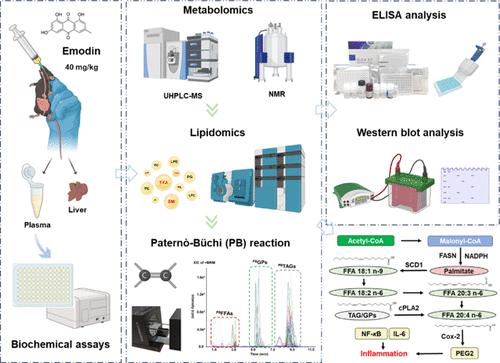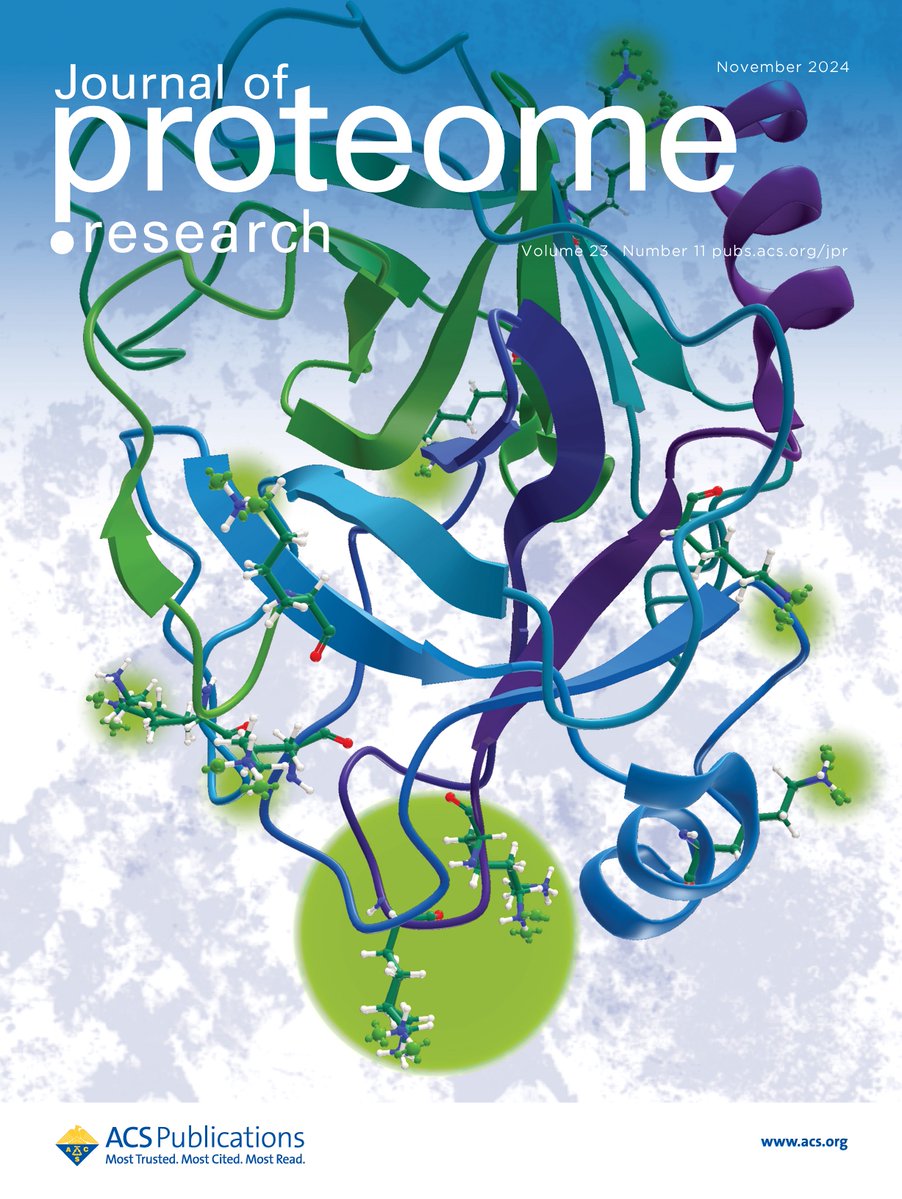Combination of Metabolomics, Lipidomics, and Molecular Biology for the Investigation of the Metabolic Disturbance of Short-Term Administration of Emodin
IF 3.8
2区 生物学
Q1 BIOCHEMICAL RESEARCH METHODS
引用次数: 0
Abstract
Emodin, a natural anthraquinone derivative, is an active ingredient in many Chinese traditional herbs. Interestingly, although it is generally considered to possess hepatoprotective activity, some studies have also reported that it has a certain degree of hepatotoxicity. Additionally, the underlying metabolic regulation of emodin remains uncertain. Therefore, we conducted a nontargeted metabolomic study based on UHPLC/Q-Orbitrap-MS and NMR. Data are available via ProteomeXchange with the identifier PXD055000. The results indicated a close association between the short-term administration of emodin and lipid metabolism. Moreover, a lipidomics investigation utilizing QTRAP 6500+ UHPLC-MS/MS was conducted, with a focus on determining the position of C═C double bonds in unsaturated lipids based on Paternò–Büchi (PB) reaction to discover the metabolic disturbance more precisely. Specifically, lipidomics revealed elevated levels of free fatty acids (FFA) alongside notable reductions in sphingomyelin (SM) and triacylglycerol (TAG) levels. Furthermore, the combination of PB reaction and molecular biology results indicated that short-term administration of emodin may lead to the accumulation of n-6 polyunsaturated fatty acids by up-regulating the expression of FASN, stearyl CoA desaturase 1 (SCD1), and cytosolic phospholipase A 2 (cPLA2). Simultaneously, up-regulation of cyclooxygenase-2 (Cox-2) expression was observed, potentially fostering the production of prostaglandin E2 (PGE2) and subsequent inflammation.

结合代谢组学、脂质组学和分子生物学研究短期服用大黄素引起的代谢紊乱
大黄素是一种天然蒽醌衍生物,是许多中草药的有效成分。有趣的是,尽管人们普遍认为大黄素具有保肝活性,但也有研究报告称它具有一定程度的肝毒性。此外,大黄素的潜在代谢调节机制仍不明确。因此,我们基于 UHPLC/Q-Orbitrap-MS 和 NMR 进行了非靶向代谢组学研究。数据可通过 ProteomeXchange 获取,其标识符为 PXD055000。研究结果表明,短期服用大黄素与脂质代谢密切相关。此外,还利用 QTRAP 6500+ UHPLC-MS/MS 进行了脂质组学研究,重点是根据 Paternò-Büchi (PB) 反应确定不饱和脂质中 C═C 双键的位置,从而更准确地发现代谢紊乱。具体来说,脂质组学发现游离脂肪酸(FFA)水平升高,而鞘磷脂(SM)和三酰甘油(TAG)水平明显下降。此外,结合 PB 反应和分子生物学结果表明,短期服用大黄素可通过上调 FASN、硬脂酰辅酶脱饱和酶 1 (SCD1) 和细胞膜磷脂酶 A 2 (cPLA2) 的表达,导致 n-6 多不饱和脂肪酸的积累。同时,还观察到环氧化酶-2(Cox-2)的表达上调,这可能会促进前列腺素 E2(PGE2)的产生和随后的炎症。
本文章由计算机程序翻译,如有差异,请以英文原文为准。
求助全文
约1分钟内获得全文
求助全文
来源期刊

Journal of Proteome Research
生物-生化研究方法
CiteScore
9.00
自引率
4.50%
发文量
251
审稿时长
3 months
期刊介绍:
Journal of Proteome Research publishes content encompassing all aspects of global protein analysis and function, including the dynamic aspects of genomics, spatio-temporal proteomics, metabonomics and metabolomics, clinical and agricultural proteomics, as well as advances in methodology including bioinformatics. The theme and emphasis is on a multidisciplinary approach to the life sciences through the synergy between the different types of "omics".
 求助内容:
求助内容: 应助结果提醒方式:
应助结果提醒方式:


